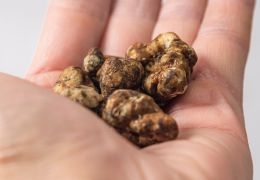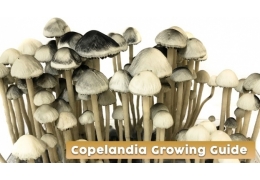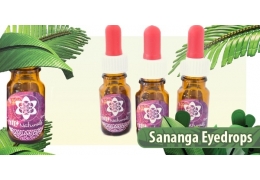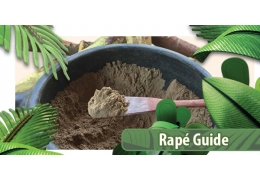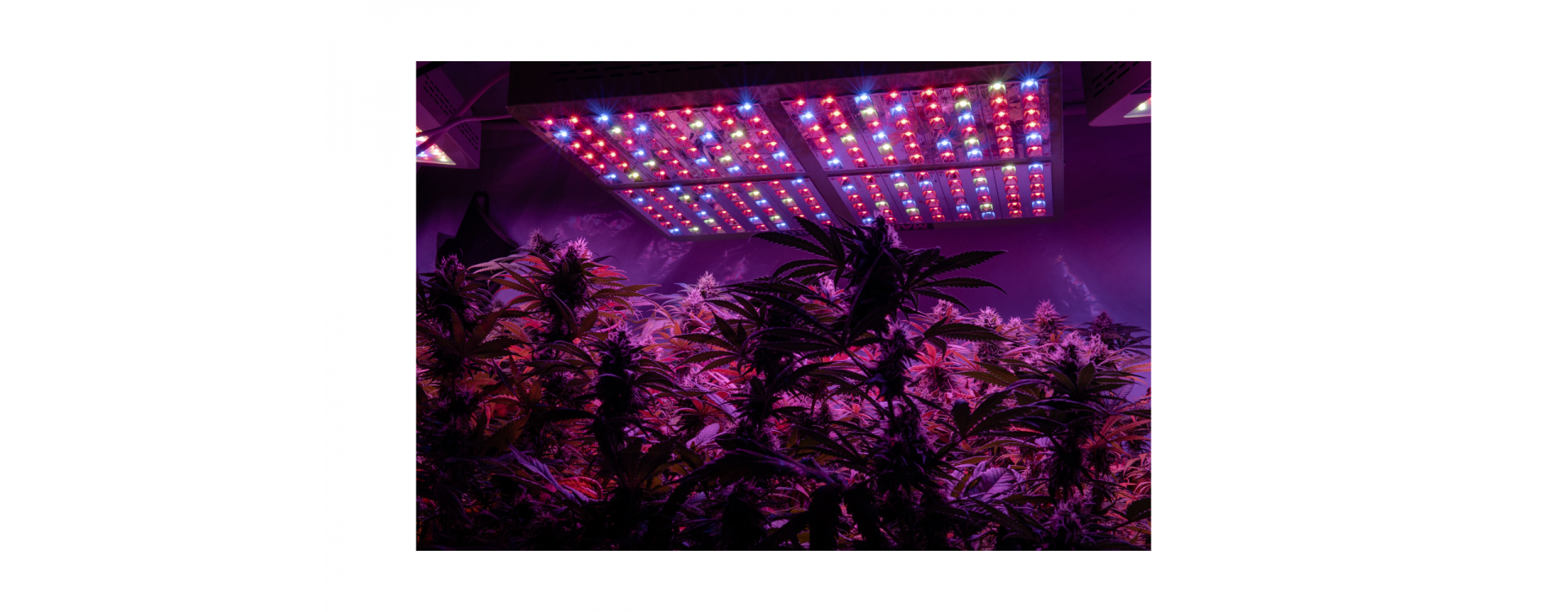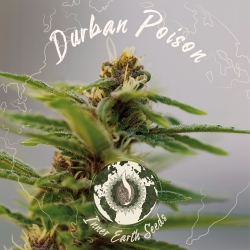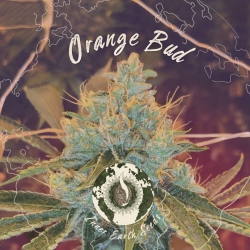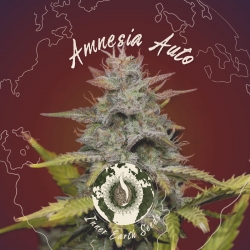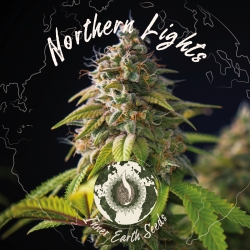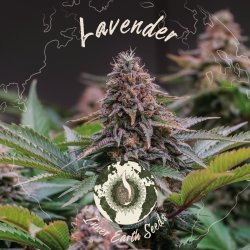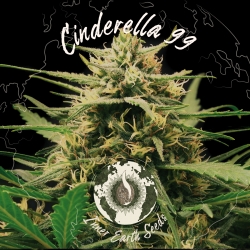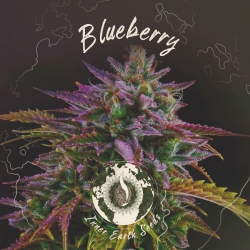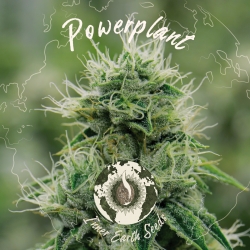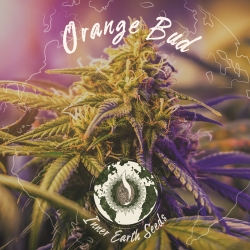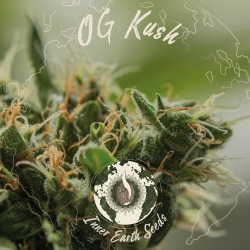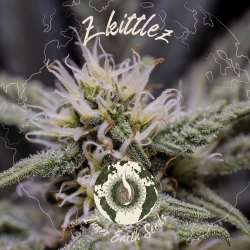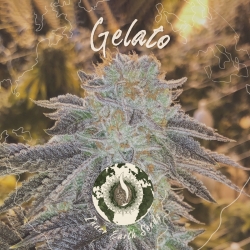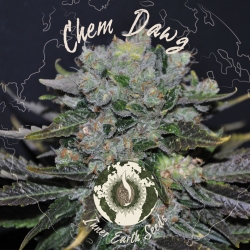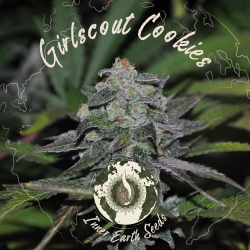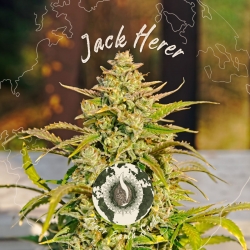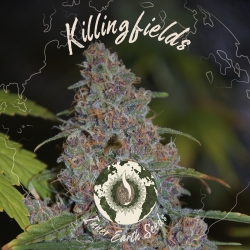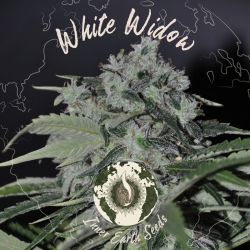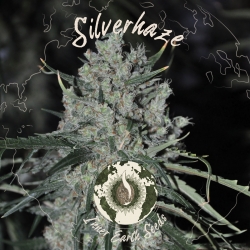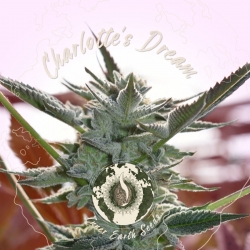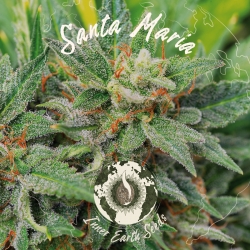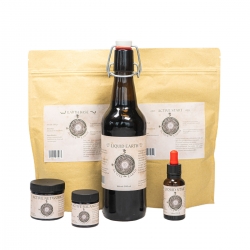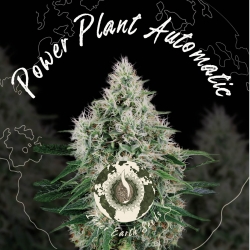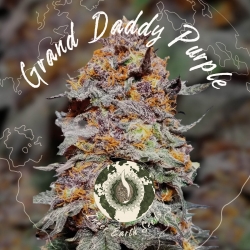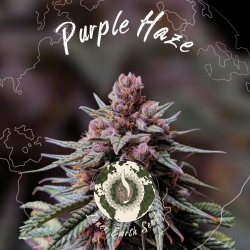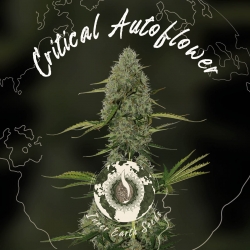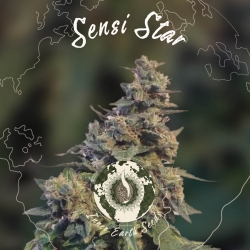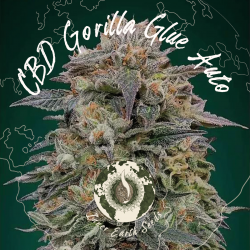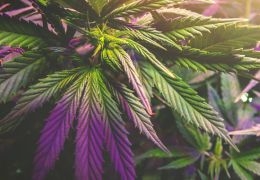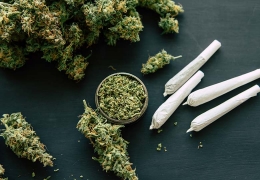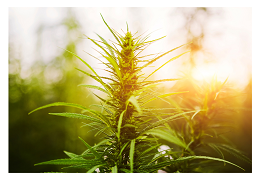Are you considering growing weed indoors yourself? Indoor weed cultivation is not difficult, but for a successful harvest, it's highly recommended to know a few important things in advance. There are countless factors that contribute to a beautiful harvest, from the germination phase to the right growing conditions. In this guide, we'll take you through the entire process.
This guide is for both beginners and growers who already have some experience. We keep it compact but mention all the things that can be important during your grow in one handy overview.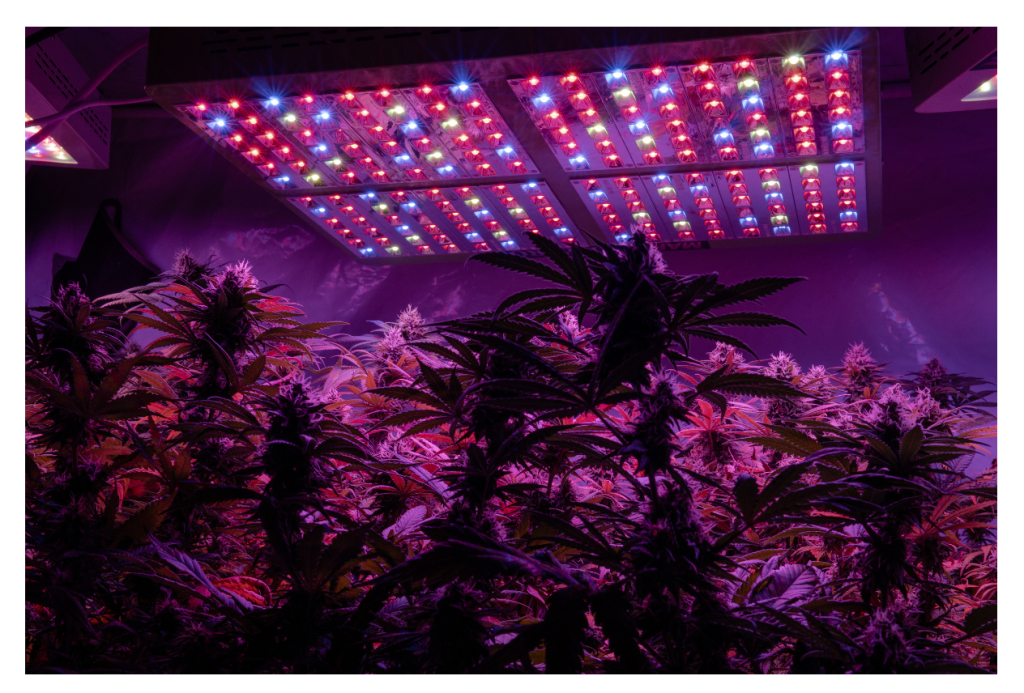
Indoor Weed Cultivation
Weed can basically be grown outdoors in any country with a not too cold climate in the summer season, but indoor cultivation gives you the opportunity to grow all year round, regardless of the weather conditions. This does require an investment in equipment and some knowledge about indoor cultivation, but it gives full control over the growing climate and offers the possibility for a continuous harvest and growing beautiful, potent high-quality weed. Below you will find a handy overview and step-by-step plan.
Essential Basic Supplies
- Seeds (duh :p)
- Grow tent or equipped grow space
- Growing medium (soil, coco, or hydroponics)
- Nutrients for growth and flowering
- Lighting sets (LED or HPS) with timer
- Fans and carbon filters (for air movement and odor control)
- Optional but handy: pH and EC meter
Germination
Germinating weed seeds is the first step in the cultivation process. According to most growers, the best method is to germinate the seeds between damp cotton pads or moist kitchen paper. The key to success is the right balance between moisture and temperature, without light. Simply put, do the following:
- Take a dish and place dampened kitchen paper or cotton pads on it. Make sure the material is not soaking wet, but well moistened.
- Place your seeds on the moist material with at least 1cm distance between the seeds.
- Cover with another layer of moist kitchen paper or cotton pads.
Ensure that the seeds do not receive any light yet: weed seeds like to germinate in the dark. Also, ensure a good ambient temperature: the ideal temperature for germinating weed seeds is between 22°C and 25°C. Oxygen also plays a role in germination; therefore, the kitchen paper method has a higher success rate than other methods (for example, the method where you put seeds in a glass of water).
You can also cover the dish with weed seeds with plastic wrap in which you poke a few holes, to keep the moisture level and temperature even more stable. But whether you cover it or not: always keep an eye on the moisture level and temperature. Add small amounts of water if necessary and ensure the indoor temperature is pleasant. Germinating weed seeds for outdoor cultivation is usually done around mid-March; behind a sunny window, the temperature should be fine. Using a propagator / mini-greenhouse is also a good option to keep the temperature high enough and stable.
If you follow the steps above, you should see the first root from the seeds appear within 1 to 4 days. With older seeds, this could even take a bit longer; over time, the germination speed and the germination percentage decrease. Therefore, buying fresh quality seeds is a good idea for a successful start to your cultivation.
Once the seeds have germinated and the first roots are visible, move the seeds to pots with (preferably organic) seed or cutting soil and place them temporarily under a suitable light source so that the plants can really start their growth. Once the plants are well grown and rooted after 2-3 weeks, repot them to their final location.
Strain Choice
Choosing the right cannabis strain is a first important step in your cultivation. If you use feminized seeds, you're sure to grow buds without seeds and don't need to remove male plants. Most indoor growers choose feminized, indica-dominant strains because these stay smaller than sativa strains and often have a shorter flowering period, so your harvest is ready sooner. If you still want to grow sativas, this is certainly possible, but keep in mind that these plants can get long and usually have a longer flowering period than indicas. This can be compensated with the right cultivation techniques and light schedules and should not deter you from growing a delicious Silver Haze for example; but if you want to make it easy for yourself, choose for example Blueberry, Chemdawg or Zkittlez. Pay particular attention to the taste and effects you want, the length of the flowering period, plant height, and whether the seeds are suitable for indoor cultivation.
Growing Medium
After choosing your seeds, it's up to you to decide which medium you want to use to let your plants grow and bloom: soil, coco coir, or hydroponics. Each medium has its pros and cons, but soil remains the most popular: it's closest to nature and contains nutrients and soil life by itself. Also, it allows for fully organic cultivation, which is a nice idea for everyone who wants to enjoy tasty, self-grown weed. For example, hydroponics usually applies synthetic nutrients (fertilizers); however, if you use organic soil and organic nutrition, you ensure that the plant can absorb all naturally present nutrients and trace elements, which benefits the taste, quality, and defense of the plant. Also, you then know for sure that no fertilizers and toxic pesticides end up in your final product.
Setting Up the Grow Space
Many people who grow indoors for personal use choose a grow tent. A good grow tent is light-proof, offers the possibility to install extraction and lights, is made of sturdy material, and has a reflective interior. Building a grow space yourself is of course also possible! Think, for example, of converting a suitable closet, properly setting up a (small) room in your house, or even converting an old computer case for a micro-grow. Whatever you choose, these are the basic points to consider when setting up a grow space:
- Ensure adequate ventilation with an extractor and air purification with a carbon filter.
- Line the space with reflective foil, or paint it white, for optimal light reflection.
- Hang the lights at the correct distance from the plants.
- Make the space completely light-proof to not disturb the light cycle.
- Make the space airtight to prevent odors.
Light Schedule
When you grow indoors, you can decide for yourself how long the vegetative stage lasts and when to start the flowering period. This is done by controlling the number of light hours the plant receives with a timer. Weed plants start flowering when they get only 12 hours of light per day; naturally, their biological clock is set to start flowering when the days get shorter. Indoors, you mimic this by giving the plants first 18 hours of light and 6 hours of dark for a few weeks (the vegetative phase), after which you set the clock to 12 hours of light and 12 hours of dark, thus entering the flowering phase. There are variations on these light schedules, and with some weed strains, it's wise to use a shorter or indeed longer vegetative stage, but the most common is a vegetative stage of 3 weeks, after which you switch to 12/12 and let the plants flower on 12/12 until they are ready to harvest.
The height at which you hang your lights above the plants is also important. If you hang the lights too low, there's a risk that the tops of the plants get too warm, which will have adverse effects on their growth and flowering. If you use HPS lights, the basic rule is that the distance in centimeters to the highest point of your plants is at least equal to the wattage of your lamp divided by ten. So, for a 400 Watt lamp, you hang the lamp at least 40 cm above the canopy.
If you use LED lighting, first read the manufacturer's instructions to determine a good height for the lamp. There are many differences between the various types of LED lamps on the market, all of which affect how high the lamp ideally should be hung. When in doubt: it's better to start with the lamp too high rather than too low, to prevent light stress in the plants.
Care During Growth
From the moment your plants have germinated, proper care is important. Think about plant nutrition, adjusting the height of the lighting during growth, and ensuring the right amount of water. Also, maintaining a stable temperature is of great importance for the growth and flowering of your weed plants. The ideal temperature varies a bit during the different growth stages, but is preferably always between 18-26°C. In any case, make sure to avoid extremes in temperature to minimize stress and promote optimal growth.
It may also be important to monitor the pH value and EC value of your medium and nutrient water. If you are a beginning grower, you can also choose not to measure pH and EC. As you gain more growing experience, you will find out why measuring pH and EC can be important - for example, when determining causes of nutrient deficiencies or other plant problems. Until then, you can do just fine for a few growing rounds without worrying about pH and EC.
Watering
Your plants obviously need water. The basic rule is to ensure that your growing medium does not dry out but also does not stand extremely wet. Balance is the key word; as you gain more growing experience, you will naturally develop a feel for this. A simple way to check if your plants need water is to feel the top layer of the soil; it should be slightly moist. Always water the growing medium itself and not the plants; this prevents mold problems. Ideally, you even water under the pots: you can do this by placing your pots on trays, after which you pour water into the trays. You can use tap water, this is generally not a problem, but experienced growers prefer rainwater, filtered water, or spring water because it has the right hardness, contains fewer residues, and ensures that for example not too much calcium ends up in your growing medium. But for a first grow, tap water is perfectly fine.
The Nutrition
Choosing the right nutrition for your plants can yield big benefits in terms of the taste of your weed, the size of your buds, and the plant's resistance to diseases. Nitrogen (N), phosphorus (P), and potassium (K) are the main nutrients. Throughout the entire grow, the plant needs every nutrient, but the need varies by phase. For example, during the vegetative stage, a plant needs more nitrogen (N) and during the flowering more potassium (K).
There are many different opinions about the right nutrition. Reading a lot, researching, and experimenting will gradually give you more knowledge and a feel for when and how much of which nutrition to give. If you want to make it easy for yourself and be done in one go, take a look at our complete nutrition kit for organic cultivation! This kit ensures you have everything at home for the growth and flowering phase, complete with instructions on how much and when to give which nutrition. This way, you also don't have to worry about under- or over-nutrition. In addition, the specially selected components of the package create an active soil life from the 1st day of cultivation, with beneficial mycorrhiza, which drastically improves the nutrient uptake of the plants.
Toppping, Fimming, LST, and ScrOG
Techniques such as topping, fimming, LST (Low Stress Training), and ScrOG (Screen of Green) are used to increase the yield and keep the plant size under control. These methods ensure a more even light distribution, allowing each bud to receive equal light and develop well.
Topping is done by cutting off the (main) top when the plant is at least 15cm high and has developed at least 3 side branches, causing the plant to grow more like a bush. This ensures that all the other tops on the plant develop more, instead of one large main top and several smaller buds. With fimming (F*ck I Missed), you do the same but leave a small part of the developing main top, hoping the plant will produce more than one main top and grow more like a bush, just like with regular topping.
Low Stress Training (LST) is a technique where you make optimal use of the available space and light. This method consists of gently bending and tying down the stems of the cannabis plant. A weed plant tends to develop a large central stem with a large main top, while the side branches usually produce smaller buds. Through LST, you try to shape the crop so that it has an even height. This way, each bud gets more evenly distributed light, resulting in larger buds and ultimately higher yields. The beauty of LST is that you don't need to adjust your growing setup. A bit of knowledge and some simple tools are all you need. Finally, a Screen of Green (ScrOG) is actually a variation on LST, where you use a net or mesh to tie down the stems with buds.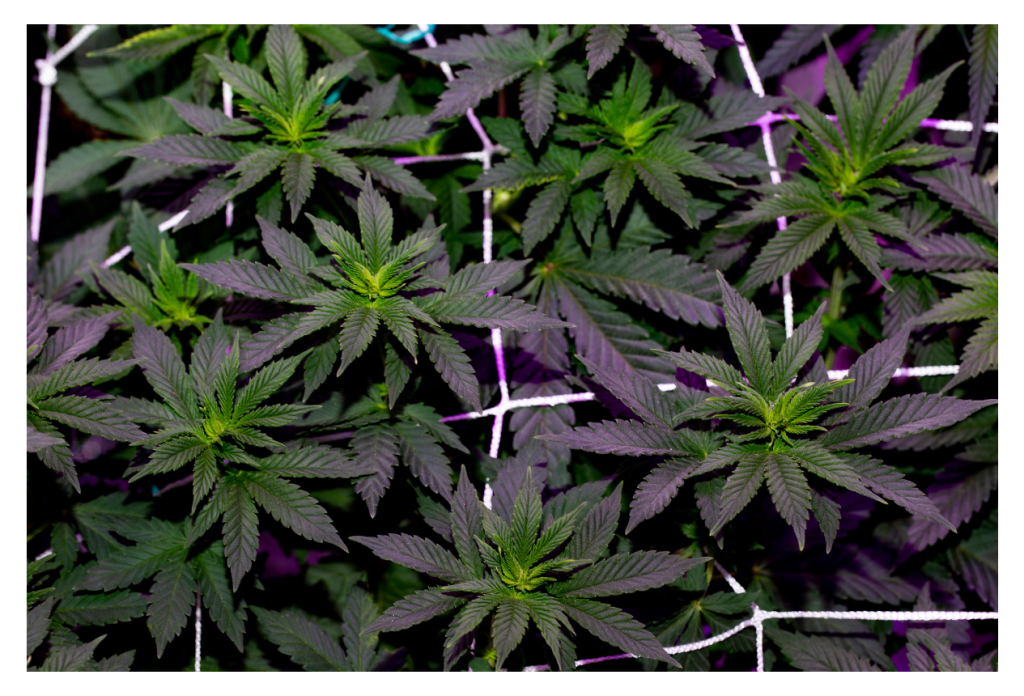
Pests and Diseases
Prevention is better than cure, especially when it comes to pests and diseases. Regular inspection of your plants and a clean growing environment can prevent many problems. Pests such as spider mites, thrips, and aphids can significantly affect your plants, and thus your harvest. But how do you recognize pests on your weed plant? We mention here the most common. Spider mites leave small yellow or white dots on the leaves and you may see fine webs. Thrips cause silvery spots on the leaves, and aphids are often seen in groups on the underside of the leaves or on young shoots.
Fungal diseases such as powdery mildew and root rot are also common. Powdery mildew is recognized by the white, powdery layer on the leaves, while root rot manifests in discolored, drooping leaves because the roots lose their function. To tackle these problems, you can use organic pesticides such as predatory mites, neem oil, or garlic spray. Remove affected parts of the plant, ensure good air circulation and correct watering, and work as hygienically as possible.
Indoor Cultivation Summarized
With the right preparation, strain choice, and grow space setup, indoor cultivation can yield good harvests of beautiful buds. By meticulously managing the growing conditions, you can grow high-quality weed all year round. Below is once again a concise overview of the steps involved in your indoor cultivation.
Step-by-Step Plan for Indoor Cultivation
- Plan your grow space: Choose the location and size of your grow tent or room.
- Gather your equipment: Acquire all essential supplies, tailored to the size of your grow space.
- Select your strains: Determine which strains best fit your growing environment and goals.
- Set up your grow space: Install lighting, ventilation, and other necessities.
- Start growing: Begin with germination and move the seedlings to the grow space as soon as they are strong enough.
- Manage your grow: Provide the right nutrition and adjust environmental factors for optimal growth.
- Harvest and process: Harvest at the right time and follow the correct drying and curing processes.
Harvesting, Trimming, and Drying
After the grow, of course, comes the harvest! But how do you determine the best time to harvest your buds? Harvesting too early means your buds are not fully grown, so you end up with less weed, and you get less THC because the trichomes are not ripe yet. Harvesting too late leads to a degradation of THC, making your weed less potent. To know the best time to harvest, you can do a few things. Look at the trichomes (resin glands) with a good magnifying glass. If the glands are about 70% milky white, it's a good time. Another indication of harvest time is the color of the pistils: if they are mostly brown, your buds are well on their way to ripening. If the leaves of your plant turn yellow, this can also be an indication of an approaching harvest. In addition, the flowering time indicated by the breeder of your weed strain is naturally a handy hint. All these things together give you a fairly accurate impression of the best harvest moment.
Harvest by cutting the side branches with the buds off the plant. Then you can choose to immediately hang the branches to dry and later trim off the small leaves, or first trim these leaves and then hang the branches to dry (dry trimming or wet trimming). There are pros and cons to both methods. Dry trimming is better for the taste and quality, but it takes up more space, there's a slightly higher chance of mold, and the trimming itself is a bit more cumbersome than when you wet trim. Wet trimming is faster and you have less chance of mold, but the taste of your weed might ultimately be slightly less strong, although the difference for many may not be hugely noticeable. The choice is yours!
Drying is best done in a dark room at about 20°C and with about 50% humidity. Ensure lightly circulating air (use, for example, a fan) and ensure sufficient space between the buds. This way, they dry best. There are different ways to hang your buds: you could, for example, stretch lines and hang the branches on them with clips. You can also trim the buds off the branches and lay them in a drying net.
Some growers swear by 'flushing' the plant, 1 to 2 weeks before the harvest. This means that you only give water in the last weeks, so the weed tastes cleaner and not like excess nutrients when you smoke it. Especially if you use fertilizers, this is a good idea. With organic cultivation, you need to worry less about this, but even then, you can choose to only give water in the last weeks, without nutrients.
Curing
Curing is the last important step in the entire process. Curing improves the taste, smell, and potency of your weed. For this, you put the dried weed in an airtight container (a canning jar, for example) in which the weed can slowly mature. Occasionally open the jar for a day to let the weed 'breathe', then close it again. After a month or two, you will notice that the weed has become noticeably softer and sweeter in taste. Make sure the weed is dry enough before you start curing: curing too moist weed can lead to sour, unwanted flavors and a much less pleasant final product!
Conclusion
Weed cultivation is a fascinating hobby that can be both challenging and rewarding. With the right knowledge and care, you can grow high-quality cannabis yourself. We hope this blog contributes to your own harvest of delicious buds. Happy growing!



